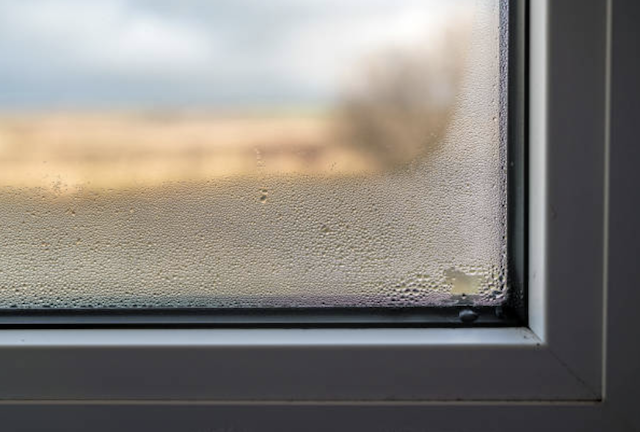How to Reduce Condensation to Prevent Mold Growth
Condensation is the change of water from a gas, water vapor, to a liquid. It happens when warm air hits cold surfaces forming water droplets which unfortunately can quickly lead to mold. We are all used to seeing condensation form on the bathroom mirror when we take a hot shower. During colder weather condensation is more likely to occur on walls, windows and mirrors around our homes.
Problems with condensation occur when there are high levels of humidity and insufficient ventilation and can lead to mold within our homes.
The Effects of Condensation
Mold growth can occur as a side effect of condensation as mold requires damp conditions to grow and thrive.
Condensation can also damage paint and wallpaper in your home as well as damaging window frames and sills especially if they are made of wood.
Once mold sets in this can have serious health implications including allergic reactions such as irritated eyes, nose and throat and increasing the chances of children developing asthma.
Preventing Condensation in Your Home
The good news is that with a few simple actions you can dramatically reduce the chances of condensation and subsequently mold growth. These include:
- Controlling humidity
- Proper ventilation
- And Insulation
Controlling Humidity
Controlling humidity can be done in a number of ways. Firstly think about the activities or areas in your home that are prone to humidity, and then think of actions you can take to reduce that humidity.
For example when you are cooking in the kitchen it’s a good idea to keep doors to other rooms closed and to open windows. If you have an extractor you should also turn this on. Another tip is to keep the lids on pans while you are cooking. This has the added benefit of saving energy. Similarly, make sure you have the fan on when you take a bath or shower and open windows for a bit while you are done.
If you have a dishwasher, this can also create a lot of humidity, so it’s a good idea to make sure you give it ample time to finish its cycle and don’t open the door until your dishes are completely dry.
Drying clothes is another activity that can create a lot of humidity in your home. Drying clothes on radiators is generally a bad idea unless you have increased ventilation to compensate. If you need to hang clothes to dry inside, which many people do in the winter, choose a room with good ventilation.
If you are still struggling with humidity you could consider a dehumidifier. This is generally only required in extreme cases but if you are suffering from damp or condensation they are an effective way of reducing humidity and preventing mold. Dehumidifiers can be bought or hired and work by extracting moisture from the air and condensing it.
As well as taking measures to control humidity you can also reduce condensation by heating your home. Low-level background heating will raise surface temperatures. This means that humid air is less likely to cool and the water within it condenses when it hits these surfaces.
Proper Ventilation
Proper ventilation is vital for keeping humidity low and preventing condensation and mold. When you have adequate ventilation you allow moisture-laden, humid air to escape your home. This happens when you open a window after you have a shower or while you are cooking and is the reason you need to make sure you have adequate ventilation if you are drying clothes.
While opening windows will obviously improve ventilation, extractors work without letting cold air in from the outside and are particularly useful in kitchens and bathrooms. Many bathrooms and kitchens will already have extractor fans so make sure they are working and make sure you are using them, especially in the colder months.
As well as ensuring proper ventilation you also need to ensure air can circulate within your home. You can encourage this by ensuring you pull furniture away from walls and keep the tops of closets and other tall furniture clear.
Insulation
Insulation is a powerful tool not only in terms of saving money but also when it comes to preventing condensation in your home.
Insulating windows either by installing double glazing or using other methods helps to raise the temperature of the inner surface of the glass and thus reduce the chances of condensation. The same thing happens when you insulate your walls, roof and even pipes within your home.
Good insulation will also help you home retain heat which means interior surfaces warm up and importantly stay warm.
Insulation also helps to prevent hidden condensation that can happen within walls. This may not be visible but can still lead to a build-up of moisture and the potential growth of mold.
Getting Rid of Mold in Your Home
If you notice condensation forming in your home it’s important to deal with it swiftly. This may mean opening windows more often, wiping away moisture, getting a dehumidifier or improving the insulation in your home or calling MoldGone.
If it gets to the point where mold has begun to grow you need to act quickly to remove it and do whatever is required to stop it from coming back. You may be able to deal with small amounts of mold yourself but for larger problems, or if you just want to be really certain you have got rid of the mold, you should hire a mold remediation or mold removal service.
This will be particularly important if you or those you live with are particularly sensitive to mold, you have young children living in the property, or you are unsure of the extent of the problem.



